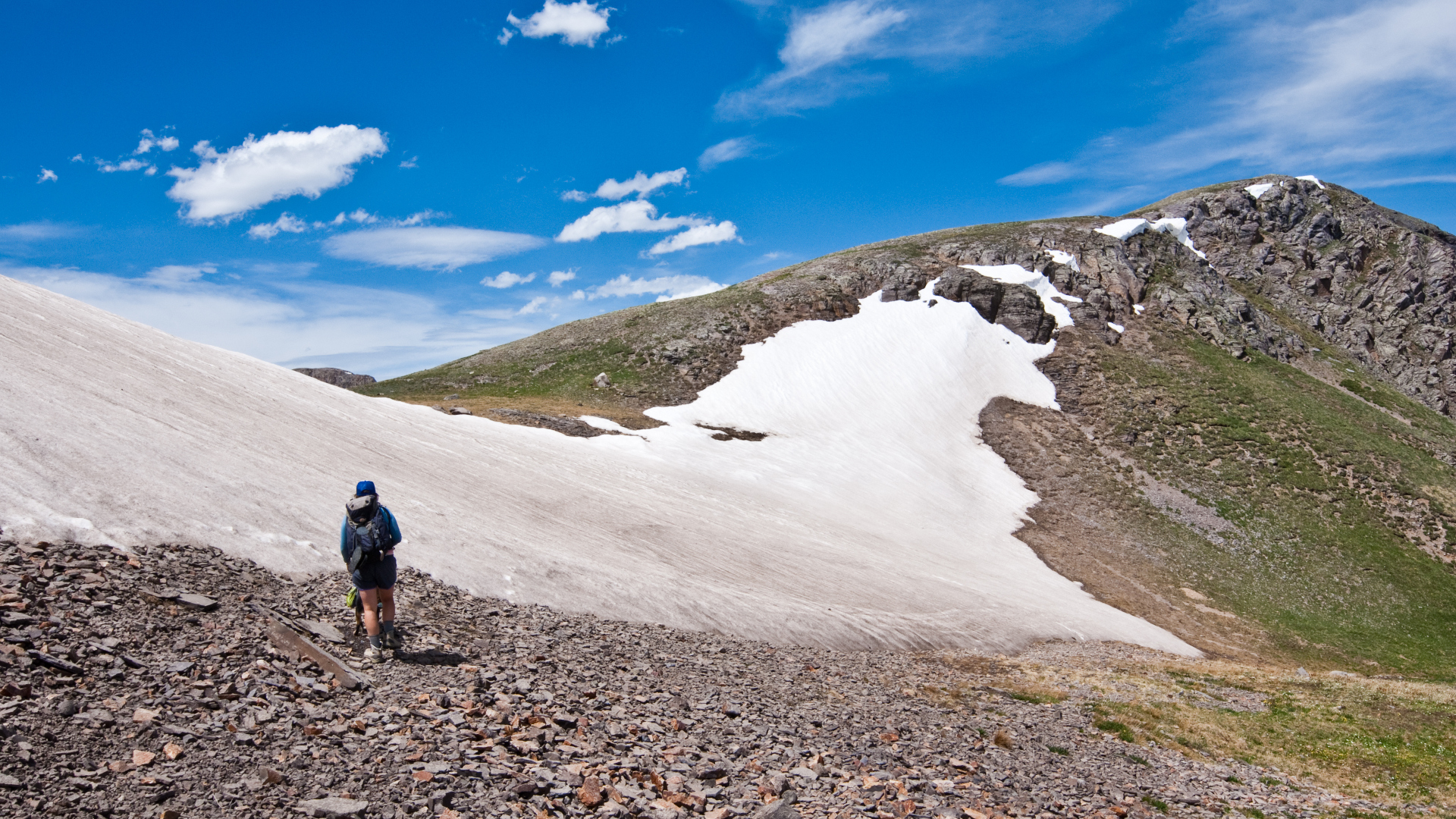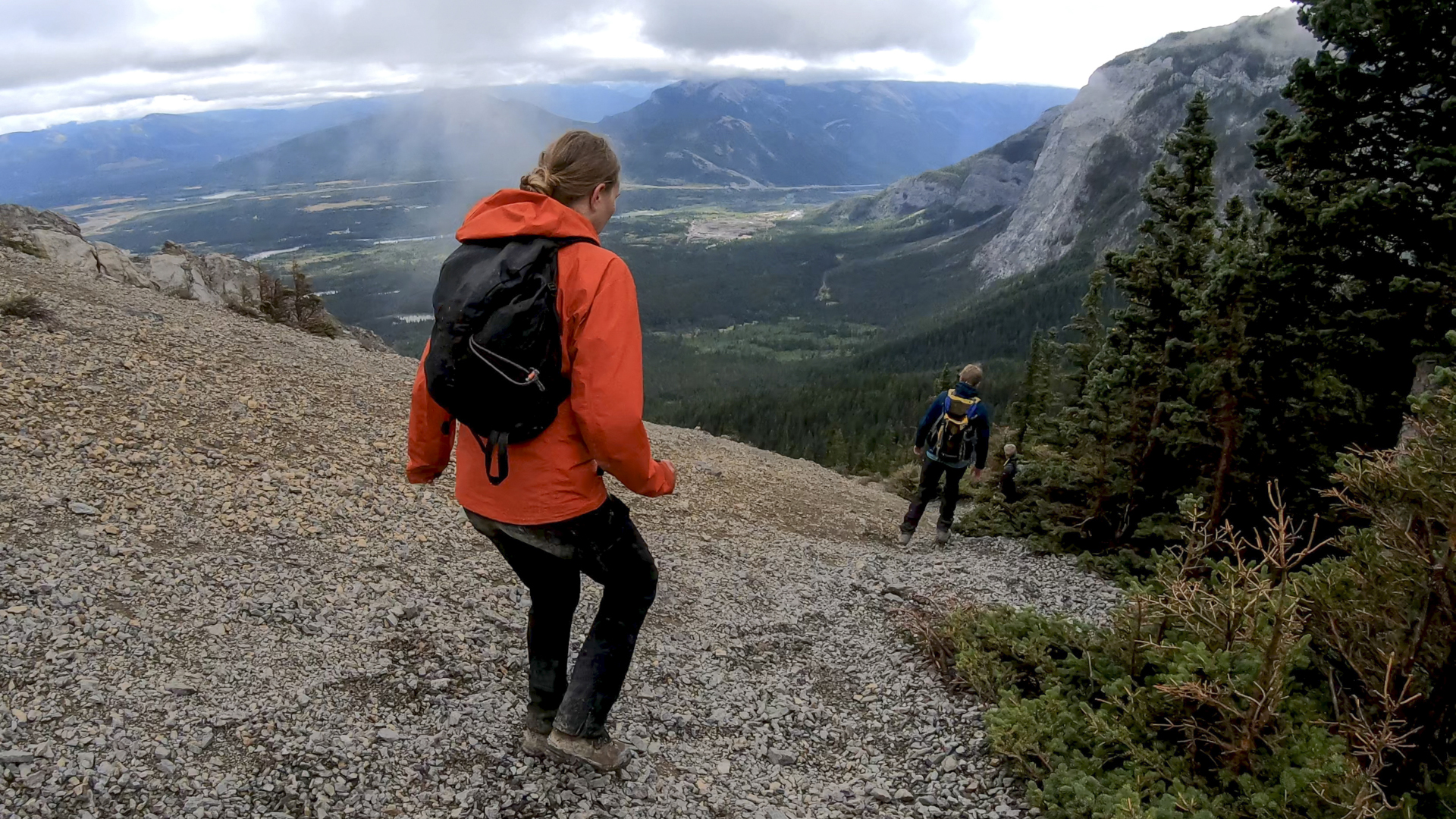What is scree – and how do you hike on it?
Scree can be the bane of a hiker’s existence, presenting dangerous terrain that can tire you out and cause nasty falls

When you’re looking up hiking reviews of the next peak you want to bag, if it’s in a high altitude area you might very well note warnings of scree along the way. Though some people like the challenge of scree fields – and in fact, scree running is an alpine sport in itself – this type of terrain can be the bane of many hikers' existence, presenting a dangerous walking surface that can tire you out and cause falls. Just last summer, we reported on a Texas hiker who died after slipping on a scree field in Colorado.
Though scree is a very common part of hiking, particularly in alpine environments, it’s something you want to take seriously. In this article, we cover what causes scree, where you might encounter it, and what to do if you have to hike on it.
What is scree on a mountain?
Scree is the term given to accumulations of small pieces of loose, broken rock and debris on a mountainside or at the base of a mountain or cliff. Scree is formed by rockfall which occurs as a natural byproduct of freeze-thaw cycles. Temperatures in the mountains often fall below freezing at night, rise above freezing as the sun gets higher in the sky, then drop below freezing again. This process results in small pieces of rock breaking off and rolling downhill until they find a resting place, usually among a pile of similar pieces of rock, otherwise known as a scree slope or field.
Scree will often be found at the base of a cliff, however in alpine environments such as among Colorado 14ers and in the Alps and Pyrenees, you’re likely to find scree on higher slopes above treeline. One of the most notable scree slopes in the US is on Virginia’s Ice Mountain.

What is the difference between scree and talus?
The terms scree and talus are generally used interchangeably, and among outdoors people, there’s no functional difference. The word “scree” is derived from the old Norse word for landslide (skriða) while in modern usage, it’s often applied to both the mountain slope covered in loose rock and the loose rock itself. Talus, meanwhile, has its etymological roots in a French word meaning slope and may be used more often to describe loose rock at the base of a cliff.
For your purposes as a hiker, however, any time you see either word on a hiking trail description, you should know that you’re going to encounter small, loose rocks that can make hiking difficult.
How do you hike on scree safely?
Hiking on scree is tricky. Whereas crossing a boulder field can be taxing on your knees and brain, scree hiking is difficult because the earth beneath your feet moves. Just as each of those small fragments of rock will eventually slide to the bottom of the mountain it’s resting on, so might you when you step on it. Unlike walking on solid ground, scree moves underfoot unpredictably, which makes walking harder, and becomes more perilous when you’re on a steep slope.
Advnture Newsletter
All the latest inspiration, tips and guides to help you plan your next Advnture!
If you’re following a designated trail, it will avoid crossing scree when possible, so make sure you stay on the trail and don’t be tempted to nip across a scree slope to save time. If the trail crosses a scree slope, it will most likely be well cut into the scree field, so again, stick to the trail and you should be alright.
If you’re off-trail and encounter scree, avoid it if you can even if it means taking a longer route, If you have to cross scree, employ the following to avoid a nasty fall:
- Make sure your hiking boots have good, grippy soles are well-fitting and properly laced.
- If you know you are going to be crossing a long scree field, consider wearing gaiters to keep annoying debris out of your shoes.
- Consider using trekking poles to help maintain balance.
- Plant your feet firmly before shifting your weight forward and keep moving.
- Stay aware and be ready to change course to find a more stable route if necessary.
- Seek out routes where other hikers have packed the scree down.
- When climbing a scree slope, kick your toes into the scree first. Switchbacking is usually easier than beelinging.
- On your descent, dig your heels in first like you would hiking in the snow.
Julia Clarke is a staff writer for Advnture.com and the author of the book Restorative Yoga for Beginners. She loves to explore mountains on foot, bike, skis and belay and then recover on the the yoga mat. Julia graduated with a degree in journalism in 2004 and spent eight years working as a radio presenter in Kansas City, Vermont, Boston and New York City before discovering the joys of the Rocky Mountains. She then detoured west to Colorado and enjoyed 11 years teaching yoga in Vail before returning to her hometown of Glasgow, Scotland in 2020 to focus on family and writing.

